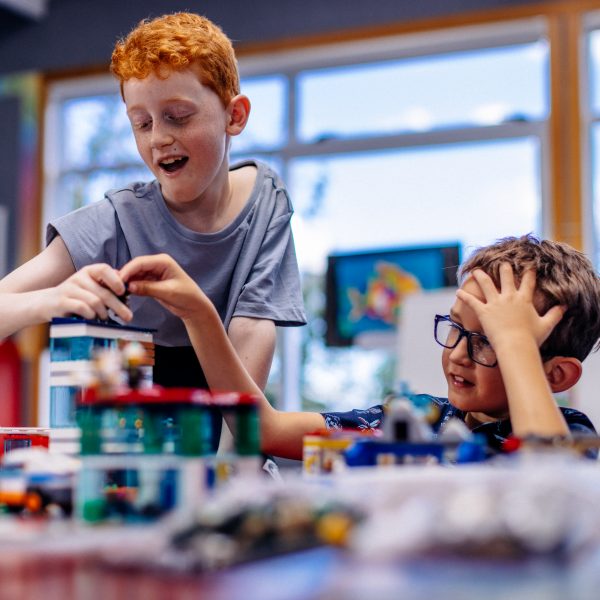Belonging by design reimagining early learning for neurodiverse children: From safe spaces to true belonging
opinion
The views expressed by contributors are their own and not the view of The Sector.

It began with a moment that changed the way I understood inclusion. I was in the classroom, quietly observing, when a disagreement between two children escalated. One of them, overwhelmed and on the edge of a meltdown, crawled under the craft table, wrapped himself in soft fabric, and began humming softly.
No one had shown him that space. It wasn’t labelled a “calm corner” or “safe space” or designed for regulation. But he Found it. Made it. Claimed it.
In that moment, I realised he didn’t need redirection; he needed space. He was regulating in the only way his body knew how. These moments are clues that show us how children seek comfort, safety, and calm in their own way.
When we pay attention to moments like this, we start to ask the right questions:
- How can we create spaces that support every child’s way of feeling safe and settled?
- How do we make sure our environment meets the needs of all children?
- How can we design for belonging from the start, instead of adding it later?
Moments like this are the blueprint for inclusive, responsive environments.
Beyond Presence: Redefining Inclusion as Belonging
Inclusion isn’t about being there. It’s about being seen, heard, and valued.
Presence is not the same as participation and participation is not the same as belonging.
When a child sits in a space where their sensory needs are misunderstood, their communication is overlooked, or their regulation is seen as misbehaviour. That’s not inclusion. It’s quite an exclusion.
Inclusion doesn’t mean adding extra help after a child is already struggling. It means removing the barriers that stop them from thriving in the first place.
It’s not about making children fit into our systems. It’s about changing our systems to meet the needs of every child.
Genuine inclusion invites us to reflect:
- Do our routines support the needs of all children?
- Are we offering flexibility, or asking every child to behave the same way?
- Are we hearing “I need help,” even when it’s not said in words?
When we stop seeing inclusion as just a checklist, and start building a culture of belonging, we create something powerful and that’s “A learning environment where difference isn’t just managed. It’s welcomed.”
Designing Environments That Listen
After witnessing how some children withdraw from overstimulating areas, we knew we had to listen more closely, not just with our ears, but with our design choices.
We reflected, “Is our environment working for every child’s brain and body or only those who adapt easily?”
This prompted a service-wide environmental audit, with inclusion at the centre. We reflected on:
- Where do children retreat when overwhelmed?
- How is noise managed during high-traffic transitions?
- Do visual cues support predictability and autonomy?
- Are there inclusive spaces for solo, parallel, and sensory-based play?
Through critical reflection, we identified barriers and began to reimagine our layout, routines, and responses.
The Self-Regulation Sensory Zone: Designed with Dignity
We created an open Self-Regulation Sensory Zone, inviting and accessible to all children needing a moment to regroup. Thoughtfully designed to support a wide range of sensory and emotional needs, it became a calm retreat where every child could feel safe, seen, and supported without needing to ask.
This space included:
- Soft lighting and neutral textures
- Noise-cancelling headphones and gentle visual stimuli
- Fidget tools, movement resources, and weighted objects
- Visual timers and “I need a break” cards
More than just a physical space, it sent a clear message: You don’t need to earn safety. You are worthy of it, by being you.
Children began using it independently. Educators observed fewer escalations. Families said, “It’s incredible to see my child feel safe enough to just be who he is.” Educators found this as a reminder that regulation is for all of us, not just children with support plans.
From Accommodation to Affirmation
True inclusion isn’t about quietly offering support in the corner. It’s about reshaping programs, routines, and environments so that no child has to leave part of themselves at the door.
We moved from:
• Accommodating difference → celebrating difference
• Modifying activities → co-creating experiences
• Managing behaviour → understanding communication
We equipped children with the language and tools to understand their emotions not just in the moment, but throughout their day.
Using visual frameworks like the Zones of Regulation (developed by Leah Kuypers, 2011), we embedded emotional literacy into our culture. These tools helped children recognise, name, and manage their emotional states with confidence.
As a result, children began identifying how they felt, what they needed, and when they needed space building independence, trust, self-regulation, emotional control, social understanding, and self-awareness.
We don’t need to be experts in every diagnosis, but we must become experts in listening and in shifting the question from ‘What’s wrong with this child?’ to ‘What is the environment asking of them?’
When we lead with curiosity, compassion, and the courage to redesign, inclusion moves from policy to practice. And in doing so, we don’t just give every child a space but we give them a place where they truly belong.
Designing with Intentionality, Guided by Frameworks
Our approach draws on the principles of Universal Design for Learning (UDL) and aligns closely with the Early Years Learning Framework (EYLF), which champions equity, agency, and responsive environments. We also connect our reflection practices to the National Quality Standard (NQS), particularly Quality Area 1 (Educational Program and Practice) and Quality Area 5 (Relationships with Children). This was not about perfection. It was about progress.
A Call to Rethink Belonging
If we believe that every child belongs, then our role is not just to welcome them, it’s to design for them.
We must question the norms baked into our routines, challenge what’s considered “typical,” and ensure that neurodivergent children don’t have to shrink, mask, or strive to fit in just to feel safe.
Let’s move beyond compliance. Let’s build places where children don’t have to earn their belonging. Because when we design for those at the edges, we create stronger, more inclusive spaces for everyone.
Inclusion isn’t giving a child a place to sit, It’s giving them a voice, a rhythm, and a reason to stay.
Belonging doesn’t begin when a child adapts, It begins when we do.
Reflect & Redesign
As you consider your own learning environment:
- Who might still be adapting just to survive, rather than truly belonging?
- What invisible expectations might be shaping your routines, spaces, or social play?
- What small design change could support one more child to feel seen, safe, and settled today?
True inclusion doesn’t begin with more resources but with deeper reflection.
References:
Kuypers, L. M. (2011). The Zones of Regulation: A Curriculum Designed to Foster Self-Regulation and Emotional Control. Think Social Publishing, Inc.
CAST (2018). Universal Design for Learning Guidelines Version 2.2. www.cast.org
Australian Government Department of Education (2022). Belonging, Being and Becoming: The Early Years Learning Framework (V2.0).
Australian Children’s Education & Care Quality Authority (ACECQA). National Quality Standard (NQS).
By Farah Junaid, Centre Director and Educational Leader
Farah Junaid is also a Committee Board Member of the ACT Children’s Week Committee, championing children’s rights and community engagement across the sector. With more than two decades of experience in education and leadership, she is known for her commitment to mentoring, reflective practice, and shared decision-making. Farah’s work is grounded in inclusion, sustainability, and empowering both children and educators to thrive.
Popular

Quality
Practice
Research
Professional bravery in ECEC: How reading the nervous system prevents behaviour escalation
2025-12-02 07:30:47
by Fiona Alston

Policy
Quality
Practice
Provider
Research
Workforce
ECEC services to close early for mandatory child safety training under national reforms
2025-12-01 07:10:09
by Fiona Alston

Quality
Policy
Practice
Provider
Workforce
Growth restrictions and enhanced oversight imposed on Affinity Education Group in NSW
2025-12-01 07:30:29
by Fiona Alston
















